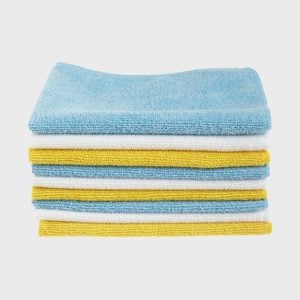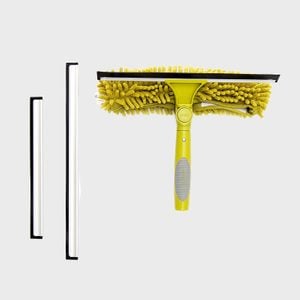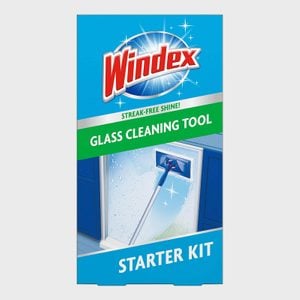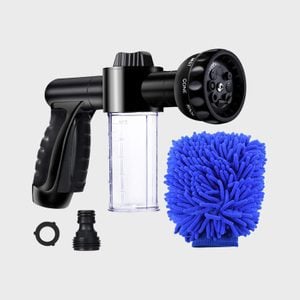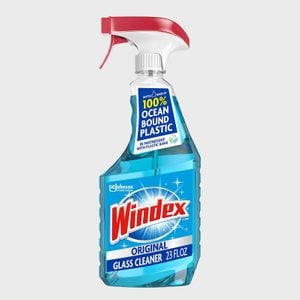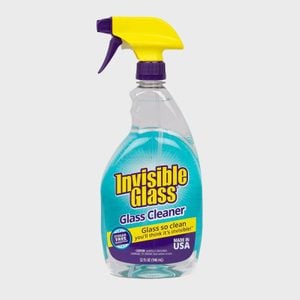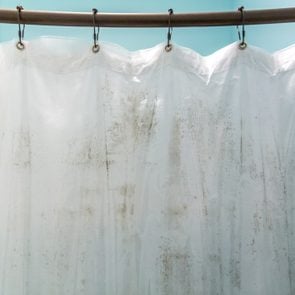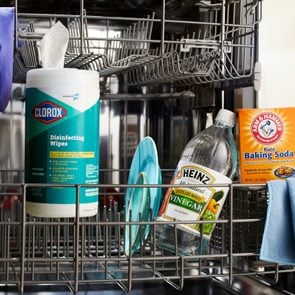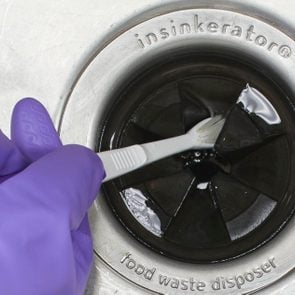How to Clean Your Windows Inside and Out, According to Cleaning Pros
Updated: Mar. 13, 2024
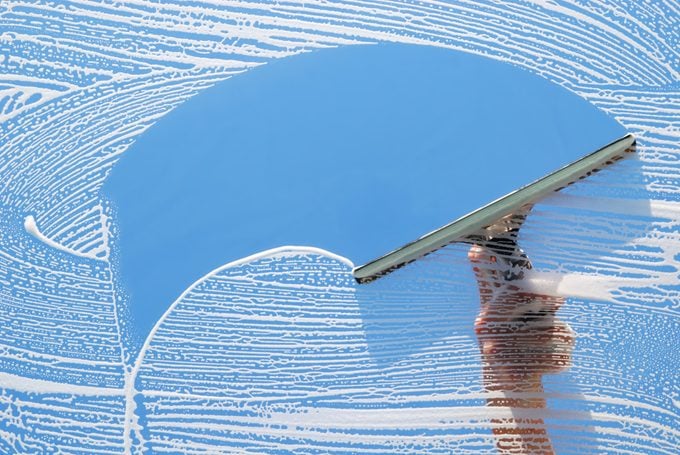
A splatter of cooking grease here, a cute dog nose smudge there—our windows are dirt magnets. And we hate to break the news to you, but there’s a good chance that you’re cleaning yours wrong. Even if you’re a pro at spring cleaning, it’s all too easy to end up with streaks on the glass, not to mention leftover dirt and debris that you didn’t wash off properly. But learning how to clean windows isn’t hard—nope, not even the windows outside that you can’t reach. You just need some insider tricks to get the job done right.
We consulted Ken Fisk, director of technical services at Window Genie, a Neighborly company, to get the lowdown on this task so you can add it to your regular cleaning schedule, along with cleaning your blinds and drapes. Once you know how to get sparkling, streak-free windows year-round, turn your attention to other areas of your house that need some love, and check out our guides on how to clean your kitchen and how to clean your bathroom, as well as your carpet and your baseboards.
How to prep your windows for cleaning
Don’t wet your windows just yet! A little prep will go a long way to ensure you don’t miss a spot—and that you protect your blinds and windowsill from potential damage. Fisk recommends the following steps:
- Lay a clean, dry towel across the sill to collect debris and prevent water from accumulating on the wood.
- Close the louvers (or slats) on blinds and dust them before pulling them up to the top of the window.
- If you have fabric window treatments, remove them so they don’t get splashed. Shake them as you remove them, or put machine-safe ones in the dryer for a short tumble on the air-dry setting. This will remove the dust and prevent it from being redeposited on clean windows.
- Remove screens (labeling each one, so you know which window it belongs to) and set aside, in a safe place, for cleaning.
- Sweep away cobwebs and loose dirt from frames, hinges and tracks. Fisk reaches for a tool found in the sporting-goods section, an umpire brush—yes, the one that’s used to sweep home plate at a baseball stadium. Turns out, it’s the ideal size for getting into those tiny crevices. Always make sure to dry sweep before wetting the windows to prevent water from mixing with the buildup and creating sludge.
How to clean windows on the inside
OK, now you’re ready to wash those windows. First, let’s talk about how to clean inside windows like a pro, using a commercial glass cleaner.
- Gently wipe the windowpane with a damp cloth. This will wet the glass while simultaneously removing the top layer of loose dirt.
- Next, spray a cleaner—such as Windex or Invisible Glass—on the window. When spraying, begin toward the top of the glass and spray a narrow line down the center. Stay away from the edges or non-glass surfaces, since they can be damaged by over-spraying.
- Use a dry, lint-free towel, ideally a microfiber cloth, to wash the window, spreading the solution across the glass. This will work better than paper towels, which can leave behind lint.
- Apply light pressure on any stubborn, stuck-on gunk.
- Once all the dirt is off the windows, it’s time to dry them. Working from the top down to prevent drips, dry the glass with a squeegee or clean, dry, lint-free towel.
- Use a dry part of the same cloth to wipe away cleaner that’s pooled around the edges where the glass meets the frame.
- If any streaks remain, go over the area in a circular motion, buffing them away with a fresh, dry, lint-free cloth.
How to clean windows without streaks
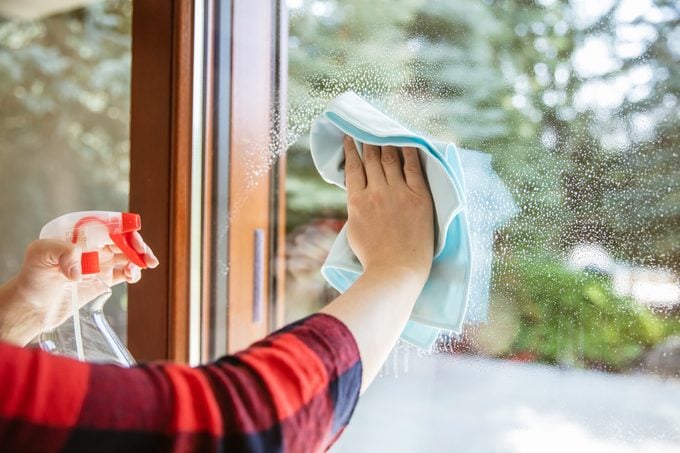
Streaks happen during the drying process, so pay close attention to how you dry the glass. The key: Always work from the top down, says Fisk. Otherwise, water will trickle onto the clean window, leaving streaks behind.
- Spray as you go. According to Fisk, “a common mistake is letting the solution dry on the window.” Focus on cleaning one window at a time.
- Always keep the squeegee blade or towel in contact with the glass. Skipping causes drips.
- Opt for the S method instead of wiping in straight lines. Fisk says the S, or swivel, method “is faster than most other methods” because you cover more surface area more quickly—and that means there’s less chance of the glass air-drying, which causes streaks. Starting from the top, move the towel or squeegee across the glass as if you were writing the letter S. Each pass will draw the water or cleaner back to the center, where you will then pick it up during the next curved pass.
How to clean windows on the outside
While exterior windows may seem intimidating, they’re actually a lot easier to tackle. That’s because you can use a garden hose instead of painstakingly wiping each and every pane of glass. To clean outside windows, replace the current spray trigger on the hose with a high-pressure spray nozzle and solution-dispensing cylinder. Pour a little liquid dish soap in the container, and use one of the eight spray patterns—from mist to shower to water-only—for a professional window wash.
- Close all windows.
- Spray the glass with a garden hose (on gentle pressure) to remove the initial layer of dirt.
- For gently scrubbing debris off windows you can’t easily reach, don’t teeter on a ladder. Fisk suggests using a telescoping pole that has microfiber cloths at the head, rotates and extends more than five feet.
- Turn the sprayer to water-only to rinse the cleaning solution off the windows.
- Wipe the window dry with a telescoping squeegee. Between passes, dry the squeegee’s rubber blade with a clean cloth to prevent drips.
You can also take a shortcut by turning your garden hose into a commercial window sprayer. Screw a jug of Windex’s outdoor glass-cleaning solution to your garden hose, and spray the glass. Then unscrew the jug, screw the spray nozzle back on and rinse with plain water. No scrubbing or drying required!
How to clean window screens
Don’t forget about those screens when you’re learning how to clean windows. This will translate to less dust, dirt and pollen flowing into your home when the windows are open. To do this properly, you’ll need to remove the screens … and it’s essential to remember which screen goes where. “Make sure you keep the screens with the windows they come out of,” says Fisk, “as the house could have settled, and the screens may not fit into other frames.” With that in mind, follow these steps:
- Remove the screens.
- Lightly dust the screens with a soft-bristled brush.
- Use a garden hose, set on a gentle stream, to wet the screen. (High-pressure streams can damage the delicate mesh.)
- Gently wash the screen with a soapy sponge. For an easy homemade cleaning formula, dissolve 1 teaspoon of liquid dish soap in 6 cups of warm water.
- Rinse thoroughly using a garden hose, again on a gentle stream.
- Let the screen air-dry completely. Returning a wet screen to your window introduces moisture that can damage the window frame.
- Once completely dry, return the screen to the correct window, and secure it in place.
The best thing to clean windows with
The best home remedy for cleaning windows
The most effective DIY window-cleaning ingredient is probably in your pantry right now: distilled white vinegar. If you want to learn how to clean windows with vinegar, Jen Stark, founder of Happy DIY Home, suggests this easy homemade window cleaner recipe: In a clean spray bottle, mix 2 cups of water with 1/4 cup white vinegar and 1/2 teaspoon dish soap. “The white vinegar is the start of this recipe, because the acid content can easily slice through dirt, grease and grime buildup on your windows,” Stark explains. Pro tip: Be sure to label the bottle, so you know what solution is inside.
How often should you clean your windows?
Fisk recommends cleaning your windows, inside and out, twice per year. However, he notes that outside windows may need touch-ups or additional washes because they get more abuse from the weather and other environmental factors. Things like pollen, rain droplets, sap-producing trees and birds all contribute to dirty windows. Passing cars can also kick up debris, and if you live near the ocean, caked-on salt can pose an additional problem.
Window cleaning mistakes to avoid
- Reaching for a lint-creating towel. You can never achieve a sparkling window with lint residue. Paper towels can leave globs of disintegrating paper behind. And non-microfiber cloths can deposit lint. Instead, try Amazon Basics microfiber cloths, which are naturally lint-free and highly absorbent, not to mention eco-friendly. Pro tip: Avoid using fabric softener when laundering microfiber cloths. The softener coats the fibers, making them much less absorbent and much more prone to streaking.
- Using too much cleaning solution. Many people mistakenly believe that more cleaning solution equals cleaner windows, but in fact, the opposite is true. More solution means more cleaning to get it off, and any left behind will streak. Start with one spritz, and if needed, apply a little more.
- Forgetting to clean or rotate cleaning supplies. Wipe the rubber blade of the squeegee between swipes, and swap out your cleaning towels. Otherwise, you’re basically smearing dirt back on your windows.
- Washing your windows on a sunny day. The pros know to clean on cloudy days. Why? The heat of the sun evaporates the water before you have a chance to wipe, giving you less-than-stellar results.
Now that you know how to wash windows, find out the right way to clean your countertops, oven, microwave and glass shower doors.
Sources:
- Ken Fisk, director of technical services at Window Genie, a Neighborly company
- Jen Stark, founder of Happy DIY Home

